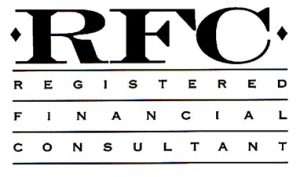Are you the parent of someone who will be going to college? Are you a current college student? Are you a grandparent of future college students? How can you prepare for college in a tax advantageous way you ask? Well look at state run 529 college savings plans for some of the most flexible and efficient ways to pay for college. It is estimated that there are some $191 billion invested in 529 savings plans and if you have funds in one you need a strategy to draw the funds down when it comes time to pay for college. But 529 plans may not be the answer to everyone and every situation.
You need an investment strategy for your 529 plan the same you would for your personal investments. Many have the plan rebalance from equities into bonds as your child gets older and approaches their college years. But in the event you do not adhere to that approach you need to get much more conservative with the plan around your child’s freshman year as any downturn in the markets will most likely not have the time to recoup your value in such a short time. In your child’s high school years your 629 portfolio needs to be composed of a small amount of equities, about half in fixed income and a medium percentage in short-term assets.
When it is time to withdrawal funds from the plan it is important to take out an amount that covers the allowable costs. As these are growing tax-deferred you will have penalty and tax consequences if you take out more than you actually need. But in the event you do withdrawal more than you need you do have some options that will allow you to avoid taxes and penalties. They are open a new 529 plan with the excess funds, prepay the following year’s tuition or simply pay the taxes on the excess you took out. Another thing that needs to be considered is who will the 529 check be made payable to when the withdrawal is done. In most instances a check made out to the child is acceptable and will be considered to have gone to college expenses. A check made out to the parents will be looked at a little more closely. And in the event the check is made out to the institution it may affect your child’s financial aid.
If you are comfortable in your financial situation there may be more efficient ways for you to pay for your child or grandchild’s education. While a 529 plan will grow tax free parents and grandparents can contribute to the plans with no problems but if your child does not go to college you have few options. One is to name a different child as the beneficiary of the plan. Another is to withdrawal the money and pay the taxes on the gains and use it for whatever you want. But grandparents may give up to five years of gifts at one time to 529 plans but will then not be able to make a gift in that child’s name for the next five years.
Some tax advantageous ways to transfer money to your children or grandchildren is to give them up to $14,000 a year in real investments in their name in an irrevocable trust that may have the stipulation that it is to be used for college or until they reach a certain age. That way you have gifted the money to them and avoid the gift tax because it is under the annual exclusion. But the best way to avoid taxes, trusts and gifts is to simply keep the money yourself and invest it in a manner that is acceptable to you. Then when the time comes pay your child or grandchild’s tuition straight to the institution and there are no limits on what can be paid in that manner. For grandparents who want to reduce their taxable estate this is an ideal way to reduce your estate and help out your grandchildren at the same time.
With proper planning there are several ways to save for college. If you can think ahead and plan properly you may be able to pay for college without the need for student loans. College, like retirement, takes planning ahead and sticking with an investment plan regardless if you use 529 plans or invest in a brokerage account and pay the tuition yourself. Develop a plan and invest for the furture.



